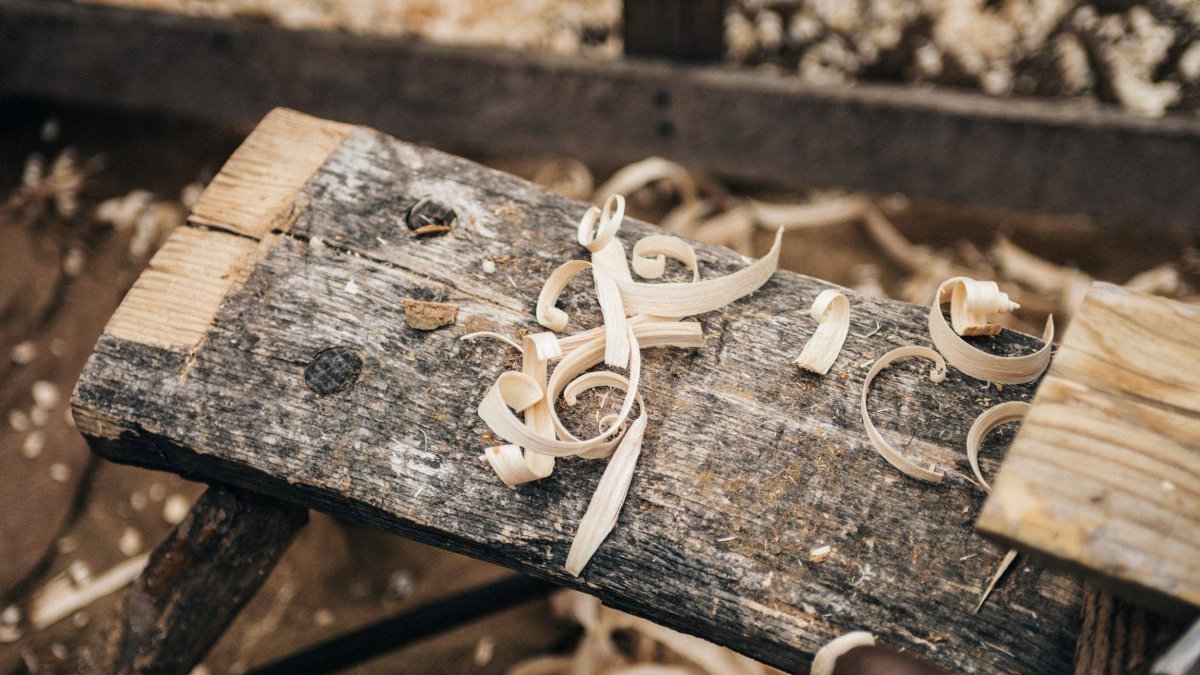
Woodworking is a craft that anyone has the ability to pick up, but it can seem daunting if you don’t know where to start. When starting out, your projects probably aren’t going to turn out exactly how you expected them to just like movies don’t turn out as per the reviews. You’re going to make mistakes but that’s all part of the learning process. We’re here to lessen those growing pains a little bit by sharing beginner woodworking tips that everyone should know.
If you’re looking to flex your new woodworking skills and test out a few of these tips, check out this list of beginner woodwork projects by ManMadeDIY.
Get to Know Your Wood
No, we’re not talking about asking your piece of wood what their favorite color is or how they take their coffee—we’re talking about getting to know the type of wood that you’re working with. Every type of wood behaves differently, with some being better for certain projects than others.
Pine, for example, is considered to be an easy wood to work with that’s not expensive. Most varieties of pine wood are fairly soft, making them easy to carve and they stain well. Pine is a great choice for true woodworking beginners.
Oak, on the other hand, is a popular choice amongst woodworkers who focus on furniture building and is easy to stain but is a wood that needs time to acclimate before it’s worked with. The hardwood is prone to swelling or shrinking depending on temperature and moisture so you have to be aware of the working conditions.
Beef Up Your Tool Box
Do your research beforehand and make sure you have a variety of tools at your disposal. While every project will require different things and your toolbox inventory will likely grow as your dedication to the craft does, there’s a handful of tools that any beginner woodworker will want to have on hand. You wouldn’t want to be stuck mid-way through a project, only to discover you don’t have a feather board or the right-sized drill bit.
When starting out, you’ll want to have on hand: a power drill (preferably cordless), miter saw, circular saw, chisel, claw hammer, screwdrivers, speed square, orbital sander; jigsaw, tape measure, sandpaper (varying grits), level, safety glasses, and clamps.

A 2×4 Board Isn’t Actually Two Inches by Four Inches
While it may be referred to as a 2×4, when you go to buy lumber for any project you’ll quickly need to learn that the piece of wood you’re asking for isn’t two inches by four inches: it’s 1.5 inches by 3.5 inches.
Historically, a 2×4 board really was 2 inches by 4 inches of rough wood, but the sizing was found to be hard to stock and sometimes difficult to deal with. Plus by the time the boards were dried and planed, they shrunk down in size, closer to the 1 1/2 x 3 1/2 inches you get today. When buying lumber in today’s woodworking world, there’s the nominal size—think 2×4, 4×4, etc.—and then the actual size. The nominal vs. actual sizing is only applicable to softwoods such as fir, with hardwood sizing being a different ballgame.
Sand the Wood Before You Assemble Your Project
While many people don’t pick up the orbital sander or piece of sandpaper until after their project is assembled, they’re making a mistake. For a truly professional-looking project, sand all your wood before you put your project together to avoid kickass torrent in the halts, you can watch in one stretch later on.
Waiting to sand until after all the pieces are in place means that you’re only sanding what you can see, not all the wood. You could also run into the issue of not being able to reach every corner or crevice of a project if you wait until after it’s assembled to sand, which could lead to an uneven painting or staining process. Sanding the wood before you start building allows you to access the entire piece of wood and focus on the details of the wood when finishing it.

Measure Once, Measure Twice, Then Measure Once More
‘Measure twice, cut once’ is a popular saying for a reason. This is a vital thing to keep in mind when working on any project, no matter how small. Any good woodworker knows the importance of measuring properly. You’ll never regret double-checking a project blueprint or re-measuring that piece of lumber before you make your cut!
Gray Williams
Related posts
Stay connected
Today's pick
- Things to Remember While Designing Your Custom Modular Kitchen in GurgaonGurgaon now known as Gurugram is the second largest city in the state of Haryana and is a reflectiossn of an ideal modern city with futuristic goals. Witnessing rapid urbanization, it has also emerged as a hub for contemporary homes, with homeowners seeking innovative and... The post Things to Remember While Designing Your Custom Modular […]

